Sergio Leone reteams with Clint Eastwood for Their Ultimate Spaghetti Western Epic, Available in two Versions
DIRECTED BY SERGIO LEONE/1966
STREET DATE: AUGUST 15, 2017/KINO LORBER STUDIO CLASSICS
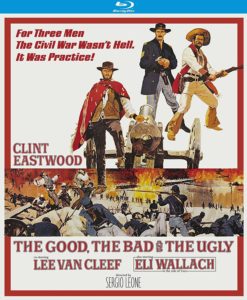 Any good Western is, at least in part, about the landscape and how it relates to its characters. Sergio Leone’s Western oeuvre is all that and more, maximizing not only the terrestrial landscape of the film, but the personal landscape evidenced in the pockmarked and unshaven faces of his perfectly cast characters. Filthy varmints, every last one of ’em.
Any good Western is, at least in part, about the landscape and how it relates to its characters. Sergio Leone’s Western oeuvre is all that and more, maximizing not only the terrestrial landscape of the film, but the personal landscape evidenced in the pockmarked and unshaven faces of his perfectly cast characters. Filthy varmints, every last one of ’em.
His 1966 opus, The Good, the Bad and the Ugly stands as perhaps his best film, certainly his most viscerally entertaining. The movie is a classic, the most famous “spaghetti Western” of them all. (That is, stylish Western films made by Italian directors, primarily starring American actors, in and around the 1960’s and 70’s). Underneath the perfectly directed pace, tone and veneer lurks a playful spirit that Leone would never again display. His other distinguished masterpiece, 1969’s Once Upon a Time in the West, is an immaculate pastiche, to be sure, (Was Leone truly “the first postmodern filmmaker”?) but is also heavier and lacking the man that Leone made famous starting with 1964’s A Fistful of Dollars, Clint Eastwood.
Eastwood is once again “The Man With No Name”, his third outing as the character in quick succession following 1964’s A Fistful of Dollars and For a Few Dollars More. The name itself is largely a marketing-inspired load of cool sounding hooey, considering that he has a different name in each of the trilogy’s films. Here, he’s called Blondie, apparently since in this world, sun bleached brown hair is close enough to blonde. Eastwood cuts a striking figure in all of these films as his instantly iconic crack shot antihero. A man of few words and a mercenary drifter with a suppressed brutal streak all his own, he nonetheless always ends up doing what’s right. That’s why he’s “the Good”.
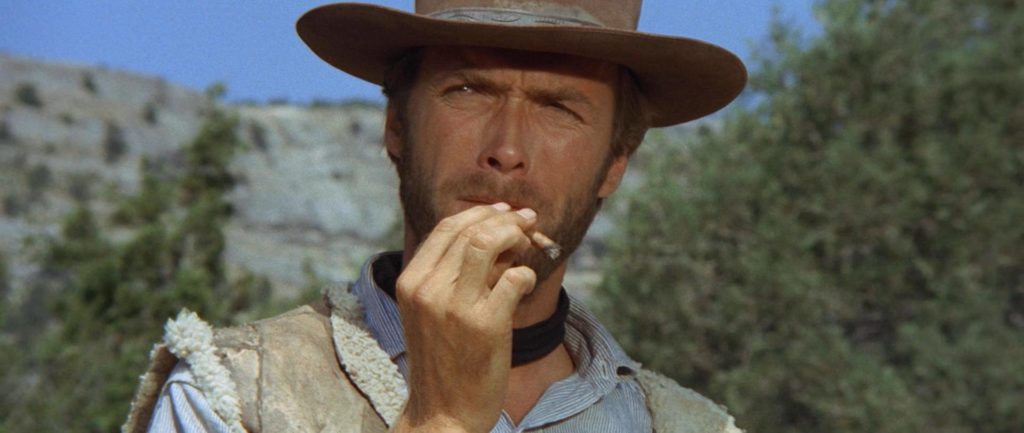
Clint Eastwood as Blondie, “The Good”.
Lee Van Cleef is “the Bad”, a bloodthirsty bounty killer called Angel Eyes, a major carryover from the previous film, For a Few Dollars More. Van Cleef, his face a venomous array of cunning slits and sharp triangles, is the perfect villain for Leone’s gloriously warped West. Despite the fact that Angel Eyes disappears for large stretches of the film, his presence is always subconsciously felt throughout, such is the power of his raw imposing mercilessness in his introductory scenes. On one hand, he’s a classical Western “man who lives by a code”, his being that “he always sees a job through to the end”; although it’s immediately obvious that he only maintains such a code for the murderous sadistic pleasure that killing as many people as possible brings to him.
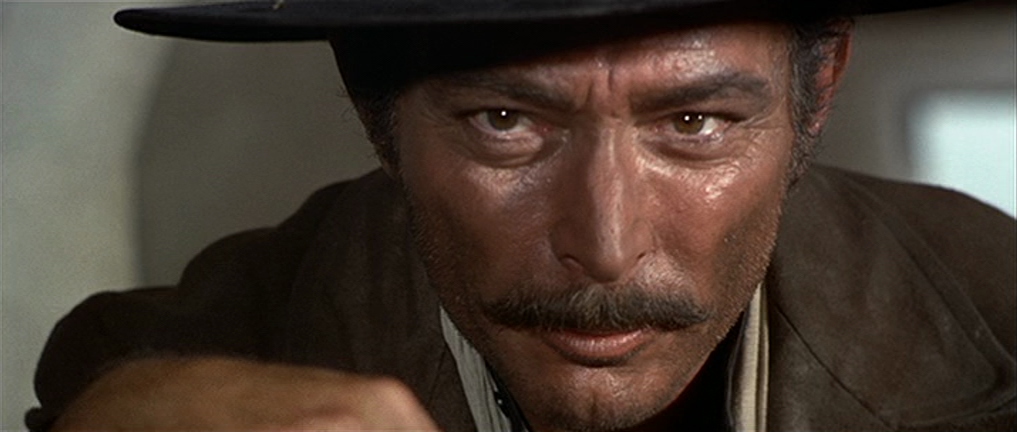
Lee Van Cleef as Angel Eyes, “The Bad”.
Which brings us to the pulse of the movie, the wild-eyed sack of sin, Tuco, played with hilarious fervor by Eli Wallach. Perpetually as sweaty as he is pudgy, Tuco earns his classification as “the Ugly” in more ways than one. First and foremost, though, it’s because no matter what alliance has been struck, Tuco is never to be trusted. In his fine and detail-packed brand new commentary track, film historian Tim Lucas correctly points out that The Good, The Bad and the Ugly is actually about Tuco, a sweaty double-crossing greasy rat with multiple lists of offenses longer than the film itself.
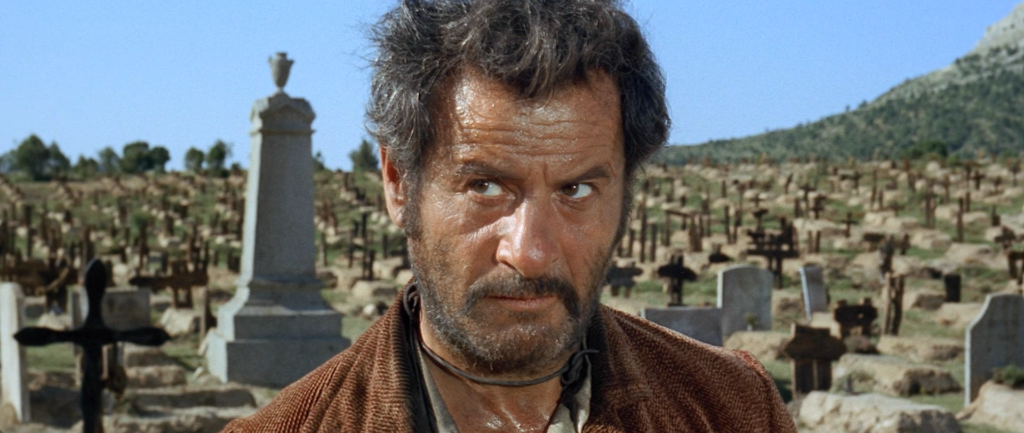
Eli Wallach is Tuco, “The Ugly”.
On that note, it should be mentioned that although The Good, The Bad and the Ugly is nearly three hours, it is the very definition of a long movie that flies by, even as we put down our stakes to willingly stay a while. This is Leone taking the grand turn into the type of epic filmmaking that he would, in part, come to be known for. But more than Leone himself, it’s Ennio Morricone’s immortal music that ultimately elevates the works into the stratosphere. Even people who don’t know the movie are familiar with Morricone’s screaming refrains of this rollicky unconventional score.
As far as the new Blu-Ray from Kino Lorber Studio Classics is concerned, the news is mix of good, bad, and ugly. First the good: The “theatrical version” is available for the first time ever in high definition, and for my money, looks pretty fantastic. This is also the first time in about twenty years that anything other than the “extended version” has been made available on disc. For longtime fans looking to get back to the simpler, more stripped down version of this rugged adventure yarn, this release is a wish granted.
Additionally, the intrusive golden hue of previous MGM Blu-Ray editions has been corrected on both transfers. These reasons alone makes this Blu-Ray set of this film the version to own. Sweetening the deal are two other commentary tracks, both previously available on the MGM extended cut. One is with Sir Christopher Frayling, author of the indispensable Leone biography Something to Do with Death, and is outstanding. The other is with the late critic Richard Schickel, a commentary perennial back in the day.
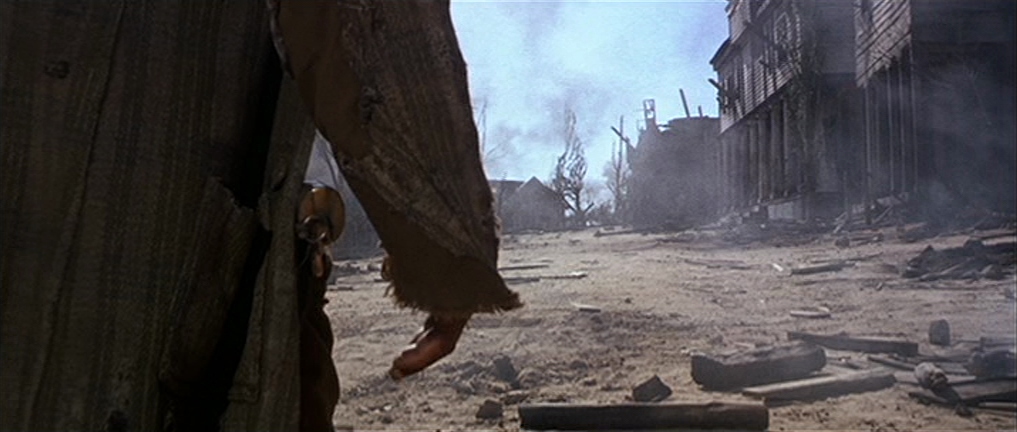
The bad news: The promise of this release being a definitive one-stop collection of all previous bonus features gathered conveniently in one place is serious marred by a defect in the transfers of all vintage MGM bonus features on the “extended cut” disc, and the trailers for the other Leone Westerns housed on the “theatrical cut” disc, resulting in quite noticeable stunted playback. While both versions of the film itself play with flaw, all other video selects assuredly do not. Those hoping to get rid of their previous MGM deluxe editions of this film will definitely want to think twice.
The amount of material affected is unfortunately large. With a wealth of bonus material dating back to the golden age of DVD special editions, when discs were anticipated based upon the number of added-value bullet points on the back cover, Leone’s masterpiece when re-released to the format in its then-new extended edition, was built to impress collectors. It certainly did, and it’s great that KL has been able to maintain this litany of well-made featurettes, documentaries, and historical pieces. Which makes the botched transfers all the more of a bummer.
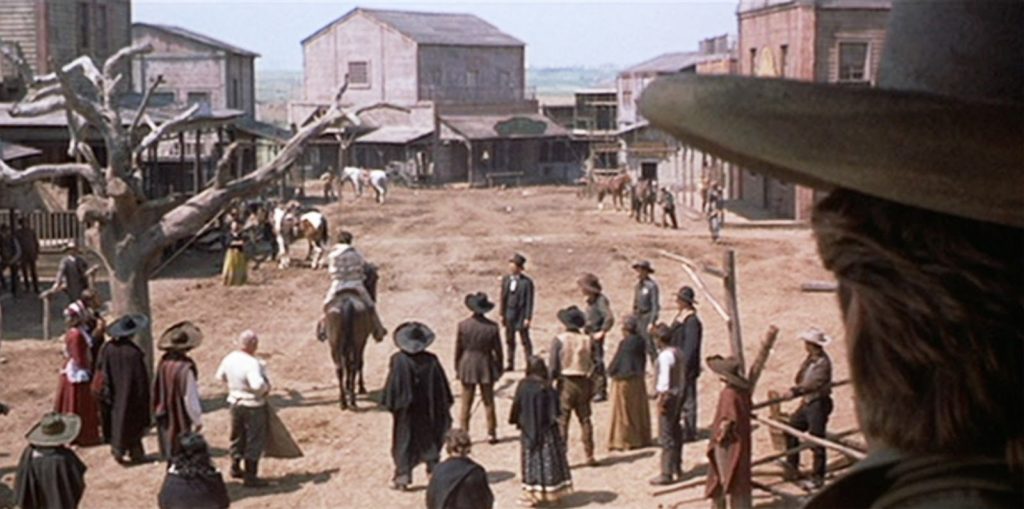
When I contacted Kino Lorber regarding this situation, a member of their production department relayed that “The vintage bonus features are in SD [standard definition] so you’re going to see some inherent artifacts, plus we made sure the feature received a high bitrate and gave the features a lesser bitrate to ensure everything fit on one disc.” This situation has been dismissed as “unavoidable”. Clearly though, the wealth of extras need their own separate disc. As they are here, they’re an over-compressed mess not worth including at all.
Which leads to the ugly news. In attempting to initially research the above issue, I stumbled onto at least one fierce debate centering around the quality of the transfer, and the authenticity of the edit. What a bucket of snakes this situation is for fans… Apparently, the KL cut of the long unavailable Theatrical Version (the centerpiece of this set) is not the “original theatrical version”, per the die-hards. The predominant claim seems to be that KL did their transfer on the Extended Cut, then went in and simply hacked out the added scenes to get it to match the late 1990’s MGM DVD of the theatrical cut (the only other disc release of that version to date). And, shock and dismay, the simple removal of the “new scenes” does not result in a perfect match of the original theatrical prints. There are other trims and adjustments here and there. BUT, in KL’s defense, it sounds like that’s all MGM did to create their old DVD back in the day… Which means, the authentic theatrical cut of The Good, the Bad and the Ugly has never been on DVD or Blu-Ray at all.
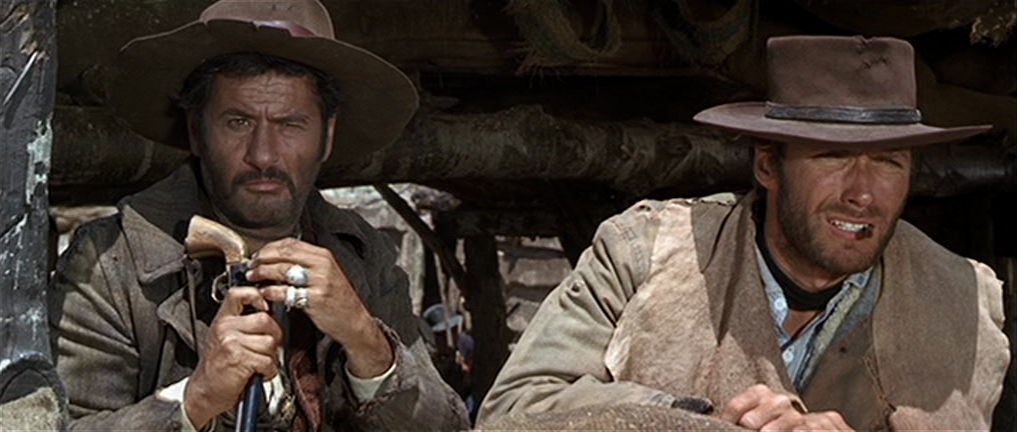
In today’s Twitter-fueled world of evaluating a film’s worth based upon gender and ethic representation, The Good, The Bad and the Ugly would be gunned down with extreme prejudice. But in its day, Leone and his fellow “spaghetti Western” auteurs, through their many bloody and tough twists on a venerable old genre, did more to globalize and diversify mainstream cinema than anything else in that withering and dire age of studio moviemaking. Perhaps needless to say, the influence of the popularity of their work is still being witnessed today.
As much as Leone did to popularize inhumanity and torture in the name of entertainment at the movies – this film uses both in darkly comedic “gotcha” ways – he also broadened the respectability of the Western genre in an age when it had dwindled to obsolescence. Like John Ford, Howard Hawks and Anthony Mann before him, he directed fairly straightforward material with artistic grandeur. In Leone’s case, he was on fire with The Good, The Bad and the Ugly. From its hyper-stylized opening title graphics to its “Lust for Gold”-fueled final moments, the film’s grandeur is wonderfully ferocious; a fantastically fevered flurry of entertaining machismo, unleashed for the ages. It changed the very landscape of movies forever.
The images used in this review are used only as a reference to the film and do not reflect the image quality of the Blu-ray.

